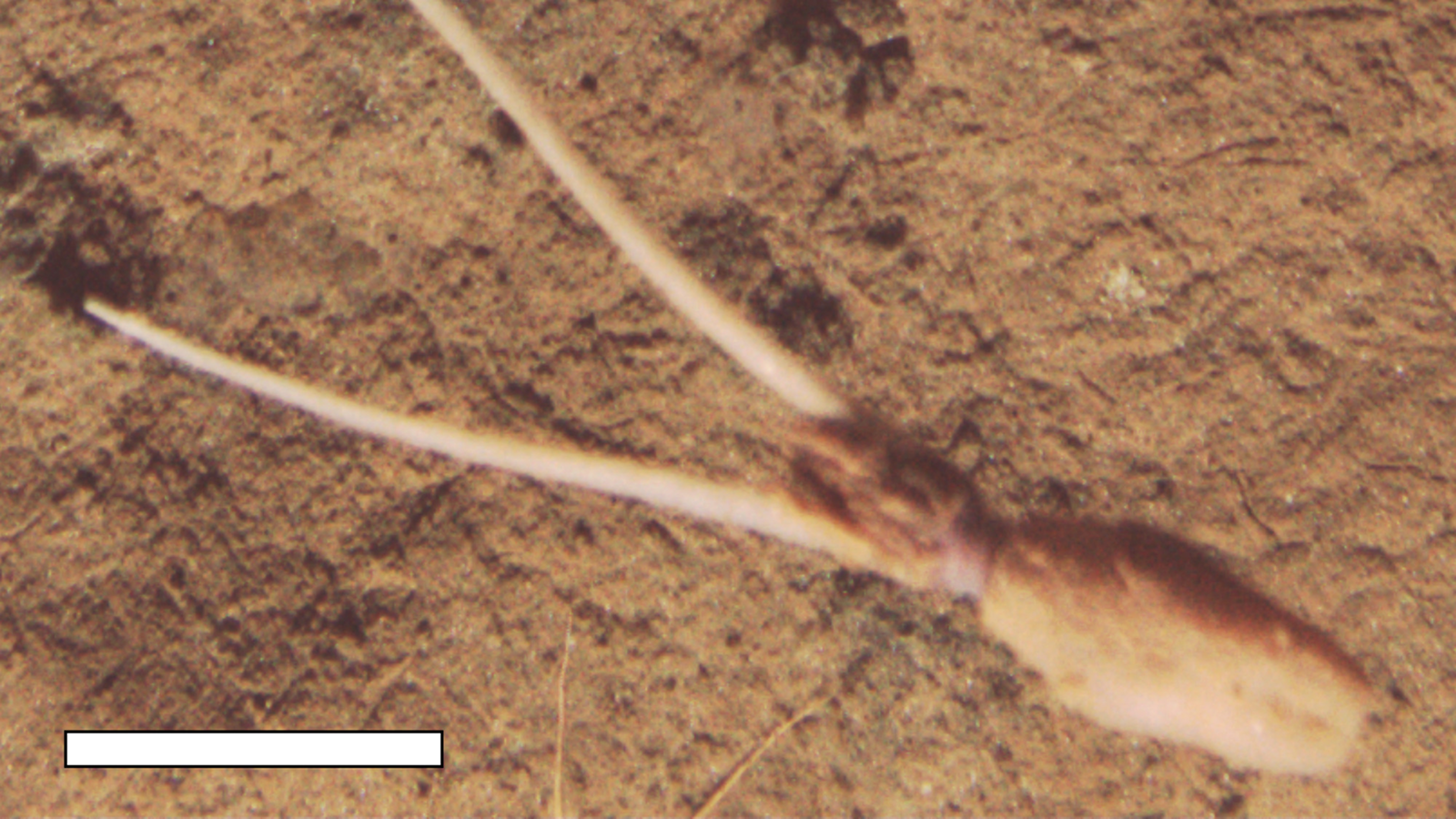Your Skin Produces Marijuana-Like Substance
Marijuana-like substances made by the skin are necessary for a healthy complexion, a new study concludes.
Back up. We've got pot growing out of our skin?
Essentially, yes. The skin has joined the growing club of organs that is known to produce "endocannabinoids" — the body's own reefer. The biggest producer of endogenous pot is the brain.
Significantly, the new study pins down long-suspected connections between brain and skin and between stress and zits.
Your thinking skin
In the skin, explained lead researcher Tamás Bíró of the University of Debrecen, Hungary, these compounds help the sebaceous glands protect us from harsh outer elements, such as the drying effects of wind and sun. Cannabinoids are thought to have a similar role in the leaves of the marijuana plant.
Among its protective functions, "endo-pot" stimulates oil production and tells hair follicles to stop producing hair. Whether this explains the plethora of pimples and receding hairlines at Grateful Dead concerts (or those of former band members) has not yet been determined.
Get the world’s most fascinating discoveries delivered straight to your inbox.
The research, funded mostly by the Hungarian and German governments, will be detailed in the October 2008 issue of The Federation of American Societies for Experimental Biology (FASEB) Journal.
Why is a psycho-stimulant working outside the brain?
Dermatologists have long suggested that mental states affect the skin, having observed flare-ups of acne, psoriasis, hair loss and other conditions that coincide with stress. Now, they are finding that the skin responds to, and produces, compounds called neuropeptides previously thought to exist exclusively in the brain. This is said to prove the brain-skin connection by nailing down the mechanism.
"It is working in both directions," said Andrzej Slominski, a researcher at the University of Tennessee who was not involved with the endocannabinoids study but does research on the skin's neuroendocrine system.
Brain-skin connection
Neuropeptides — such as serotonin, melatonin, cortisol and, possibly endocannabinoids — are made by the skin in response to environmental stressors or rewards such as thorns, humidity, sunshine or a refreshing breeze. These compounds can then spur the brain to alter behavior, Slominski explained.
Conversely, psychological stress sends signals from the brain to the skin.
The discoveries are giving credence to old wives' tales that connect skin condition with mental state. Yes, perhaps exam period did give you that pimple.
Because the skin is less complex than the brain, it knows only a few names for stress, said Slominski.
Therefore, the skin may respond to emotional distress as if the body is under physical attack. Protective lubricants are increased (resulting in oily skin) and less critical functions (like growing hair) may be halted.
Even though the skin is the simpler organ, as primates evolved our skin likely learned to deal with stress before the brain did, said Slominski. The skin, the body's largest organ, is continuously exposed to a stressful environment, he pointed out. Of all organs, it had the most pressing evolutionary need to develop protective responses.
Later, the skin's stress responses were adopted and perfected by the brain, he said, which explains why the same compounds have similar effects in each organ.
Natural high?
While these discoveries may lead to breakthrough topical treatments, such as the use of endocannabinoids to treat chronically dry and itchy skin, the research may also inspire the pursuit of relaxation in the name of a glowing complexion and a full head of hair.
What about the endo-pot already on our skin? Can it get us high?
"Theoretically, yes," said Bíró. But, while our skin is constantly pumping out its own type of hash, even if you chewed your arm to bits, he continued, there isn't enough to have a psychological effect.
Robin Nixon is a former staff writer for Live Science. Robin graduated from Columbia University with a BA in Neuroscience and Behavior and pursued a PhD in Neural Science from New York University before shifting gears to travel and write. She worked in Indonesia, Cambodia, Jordan, Iraq and Sudan, for companies doing development work before returning to the U.S. and taking journalism classes at Harvard. She worked as a health and science journalist covering breakthroughs in neuroscience, medicine, and psychology for the lay public, and is the author of "Allergy-Free Kids; The Science-based Approach To Preventing Food Allergies," (Harper Collins, 2017). She will attend the Yale Writer’s Workshop in summer 2023.



